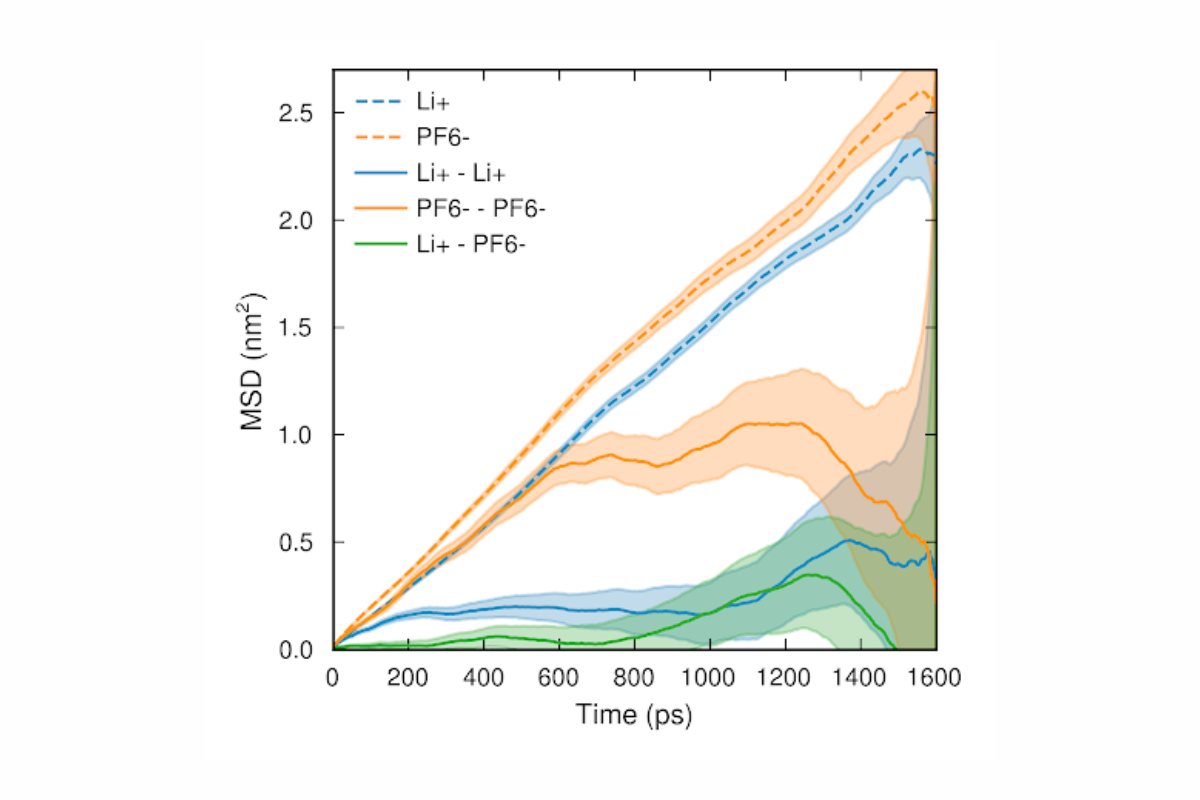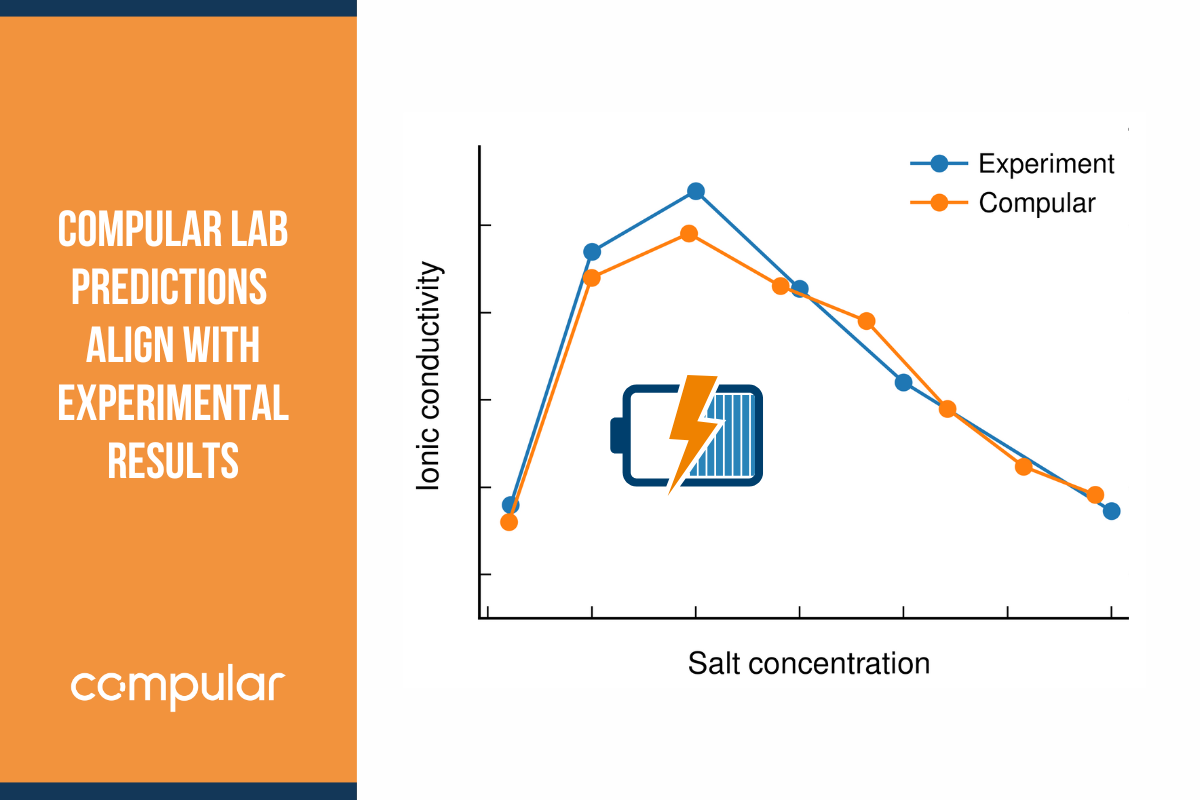How does electrolyte composition impact Na-ion battery performance?
Accurate cell models depend strongly on high-quality input parameters, yet electrochemical parameters are often difficult to obtain. By integrating molecular dynamics simulations from Compular Lab with PROTEO, the physics-based design tool developed by CIDETEC, we significantly enhance simulation accuracy. This leads to more realistic modeling that closely aligns with experimental data. Our study on a…
Read moreHow Multi-scale Models Are Enhancing Battery Performance and Design
Written by Somayeh Toghyani (GT), Peter Stopp (GT) and Magnus Rahm (Compular) May 21, 2025 Beyond Experimentation: Predicting Battery Performance with Multi-Scale Models In today’s electrified world, designing better batteries goes far beyond trial-and-error testing. Engineers and researchers are increasingly turning to simulation to accelerate innovation and reduce development costs. Lithium-ion batteries power modern energy…
Read moreHow can we model the effect of solvent breakdown on the performance of your batteries?
As batteries such as lithium-ion batteries are cycled, some solvent components are reduced to form the solid-electrolyte interphase (SEI). While this process is most rapid in the first few cycles, it is also an important factor in the long-term aging of the cell. As some electrolyte species (typically ethylene carbonate, EC) preferentially break down, their…
Read moreInterview with Professor Patrik Johansson
We’re thrilled to share that our co-founder, board member, and scientific advisor, Professor Patrik Johansson, was recently appointed Director of the large-scale initiative Battery 2030+ and Professor of Chemistry at Uppsala University. We took the occasion to ask Patrik some open questions on the state of the battery ecosystem in Europe. Patrik, the European battery…
Read moreFaster and cheaper transport properties with Compular Lab
There are many properties that describe transport in electrolytes, but they are not all created equal. Self-diffusvities are simple When we talk about diffusivity, what we mean is often self-diffusivity. The self-diffusivity describes how a single species diffuses over time, regardless of how the other components of the electrolyte move at the same time. Computing…
Read moreSolving the problem of missing parameters in cell models
Is lack of parameters an issue for your battery models? For most battery developers, simulations are an integral part of the development process. Simulations on the continuum scale require knowledge of the properties of the materials that are being modeled. Sometimes such material properties can be sourced from open databases, but more often than not,…
Read more





